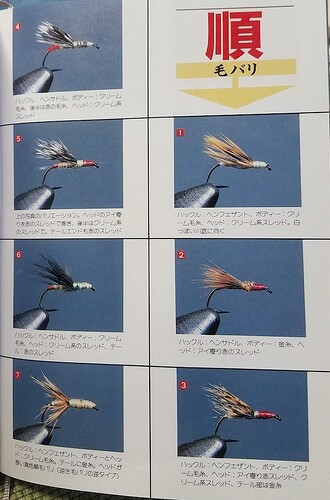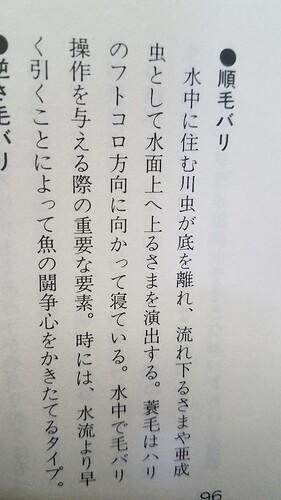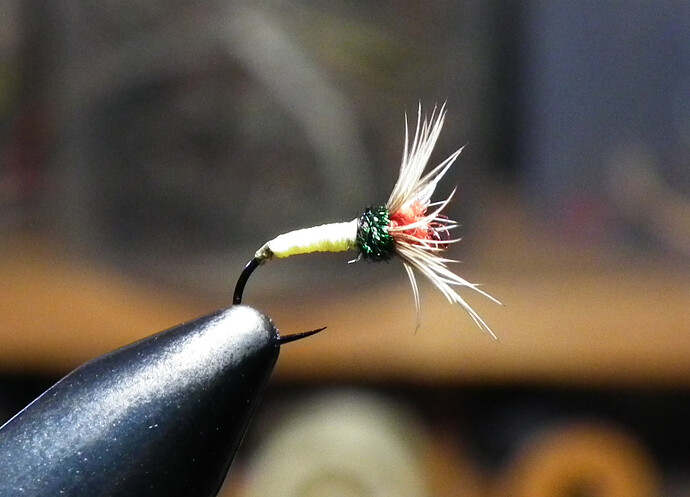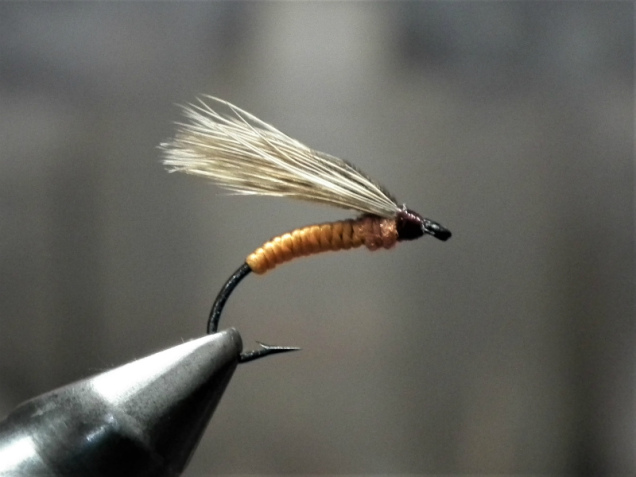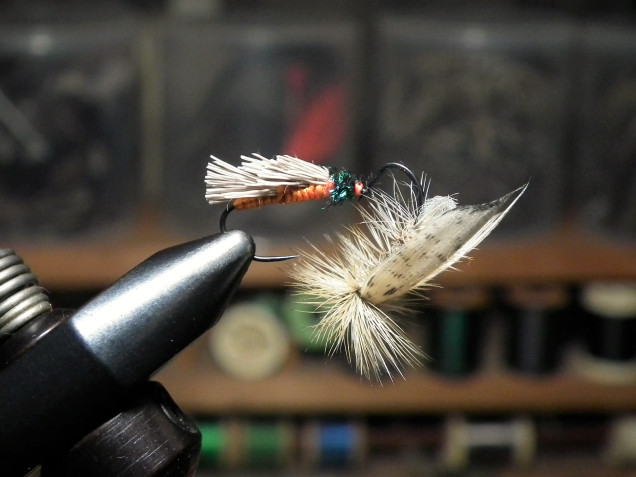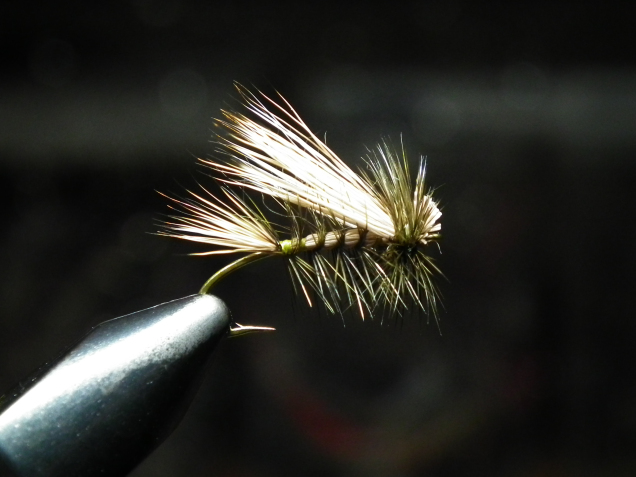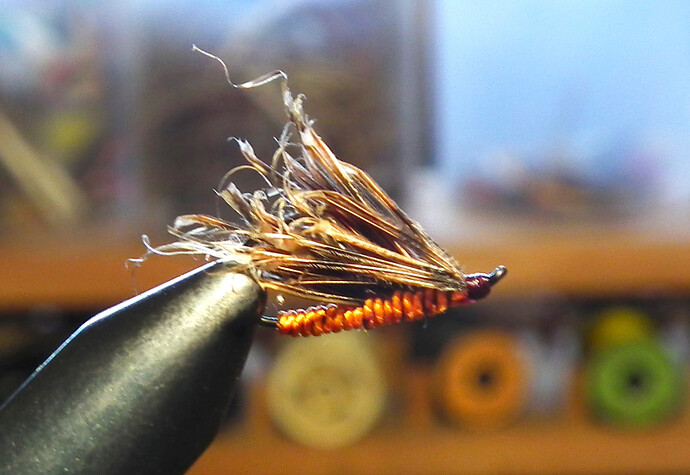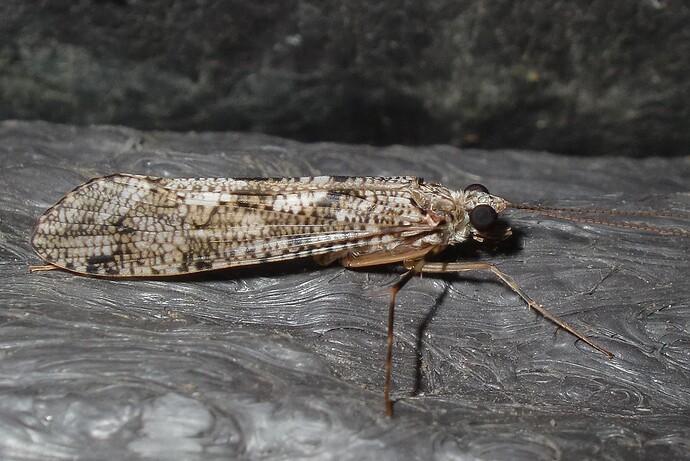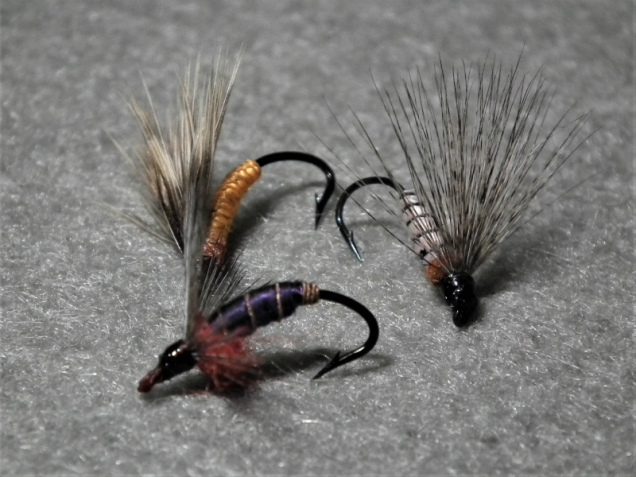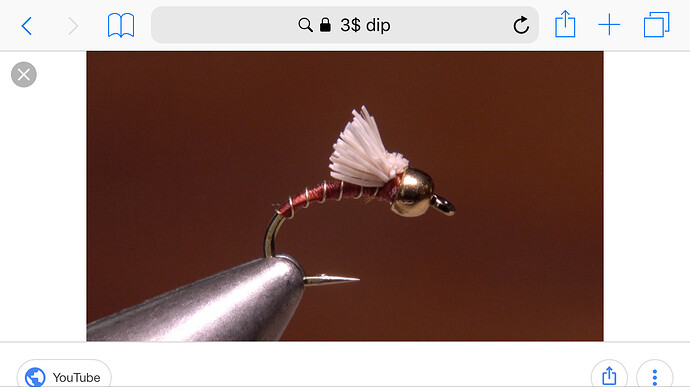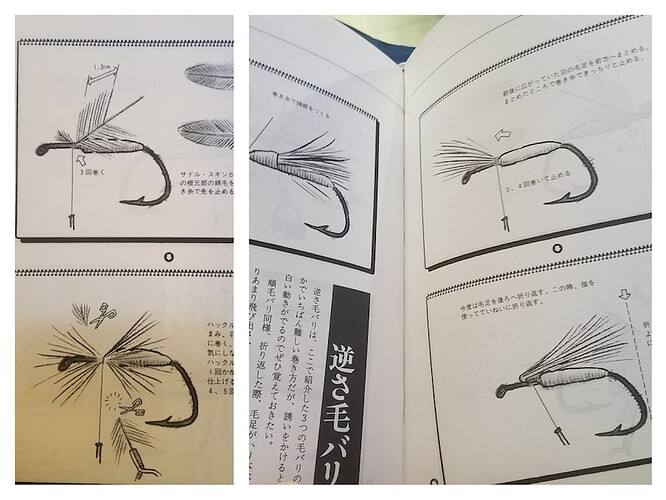Anybody here use the Fuji style jun ( 順 ) kebari much?
I used them a bit and caught fish - but haven’t really explored their use fully yet
I think I’ll try to do that this season
I’ve tried using google translate to translate a paragraph from the book describing them - hoping to get a clue as to intended usage and proper fishing technique but it was a bit confusing to say the least. As far as I could figure there was discussion of immature stream insects rising - and perhaps a discussion of moving faster than the current.
Based on that maybe they are intended as a sort of emerger pattern to be actively fished
Based on appearance I’d say that’s a potential use for sure
Here’s a pic of the flies and a section of the book of anybody wants to try a hand at translation
